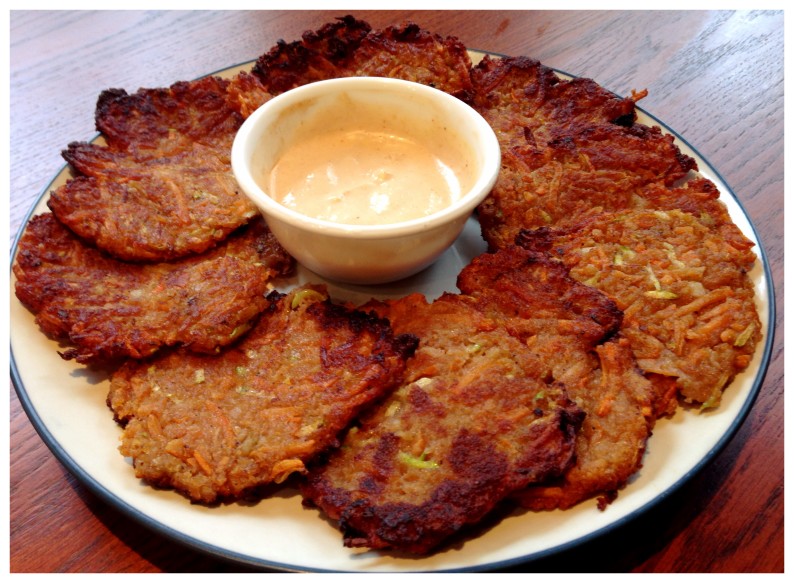Thanksgiving is extra special for some of us this year because, for the first time since 1888, the Jewish (lunar) calendar syncs up with the Gregorian calendar so that Thanksgiving falls on Hanuukah. Experts say it won’t happen again for another 77,798 years. So, we figured we’d better make the most of this once-in-seventy-seven-millenia coincidence. Traditionally on Hanukah to honor the miracle of the oil in the temple, one cooks with oil and make lots of fried foods. Latkes, fried potato pancakes, are the quintessential traditional food of Hanukkah. This year, we decided to infuse them with Thanksgiving flavors and the results were delightful. Traditionally, potato latkes are served with applesauce, sour cream or even ketchup (my father’s and brother’s preferred condiment). While these work great with all of the above, I strongly suggest using my chipotle aioli recipe or even topping them with some cranberry sauce, to give it

Confession time: I had never had beets until the first time I roasted them… I was 38 years old. They were just never in my house growing up, so by the time I got to be an adult, I never even noticed them in the store. One day, Ethan said he wanted to get some at the store, so we got them. Then there I was left with these dirty looking roots, not sure what to do with them. Knowing that nothing brings out the sweetness in root vegetable like roasting them, I figured roasting would be a good idea and got to work preparing them. I am so glad I did and so grateful to Ethan for getting them. For this recipe we bring together beets, onions, garlic and carrots – sort of going back to our roots. (Sorry.) Try a variety of carrots if you can them. Carrots come

Kabocha are Japanese pumpkins that are by far my favorite of all autumn pumpkins and gourd-fruit. I first discovered kabocha when I lived in Japan back in 1995. It is pervasive in Japanese cuisine year-round but particularly so in the late summer and autumn when pumpkins are in season. It’s hard to describe the taste of a Kabocha but, if I had to, I’d say it has the texture of a sweet potato and the flavor of a regular pumpkin, but sweeter and milder. Most people find kabocha to be sweeter than butternut squash. Kabocha are often served in stews in Japanese cuisine. They are also popularly served as tempura that is placed over rice (donburi) or in soups. Kabocha are rich in beta carotene, iron, vitamin C and potassium. They are also loaded with tons of fiber. Like most pumpkins and squash, kabocha are tough to cut, so make sure you




